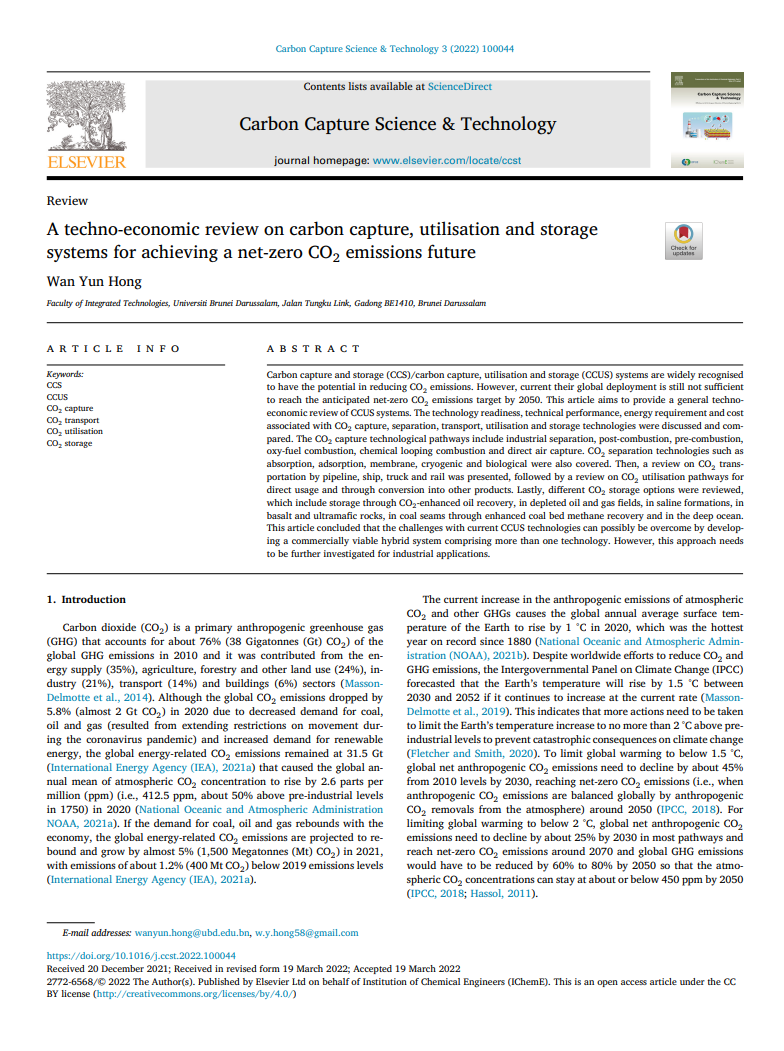
Keyword(s)
Author(s)
Wan Yun Hong
Country(ies)
Published Date
Access
DOI
Faculty of Integrated Technologies, Universiti Brunei Darussalam, Jalan Tungku Link, Gadong BE1410, Brunei Darussalam
Carbon capture and storage (CCS)/carbon capture, utilisation and storage (CCUS) systems are widely recognised to have the potential in reducing CO2 emissions. However, current their global deployment is still not sufficient to reach the anticipated net-zero CO2 emissions target by 2050. This article aims to provide a general techno-economic review of CCUS systems. The technology readiness, technical performance, energy requirement and cost associated with CO2 capture, separation, transport, utilisation and storage technologies were discussed and compared. The CO2 capture technological pathways include industrial separation, post-combustion, pre-combustion, oxy-fuel combustion, chemical looping combustion and direct air capture. CO2 separation technologies such as absorption, adsorption, membrane, cryogenic and biological were also covered. Then, a review on CO2 transportation by pipeline, ship, truck and rail was presented, followed by a review on CO2 utilisation pathways for direct usage and through conversion into other products. Lastly, different CO2 storage options were reviewed, which include storage through CO2-enhanced oil recovery, in depleted oil and gas fields, in saline formations, in basalt and ultramafic rocks, in coal seams through enhanced coal bed methane recovery and in the deep ocean. This article concluded that the challenges with current CCUS technologies can possibly be overcome by developing a commercially viable hybrid system comprising more than one technology. However, this approach needs to be further investigated for industrial applications.